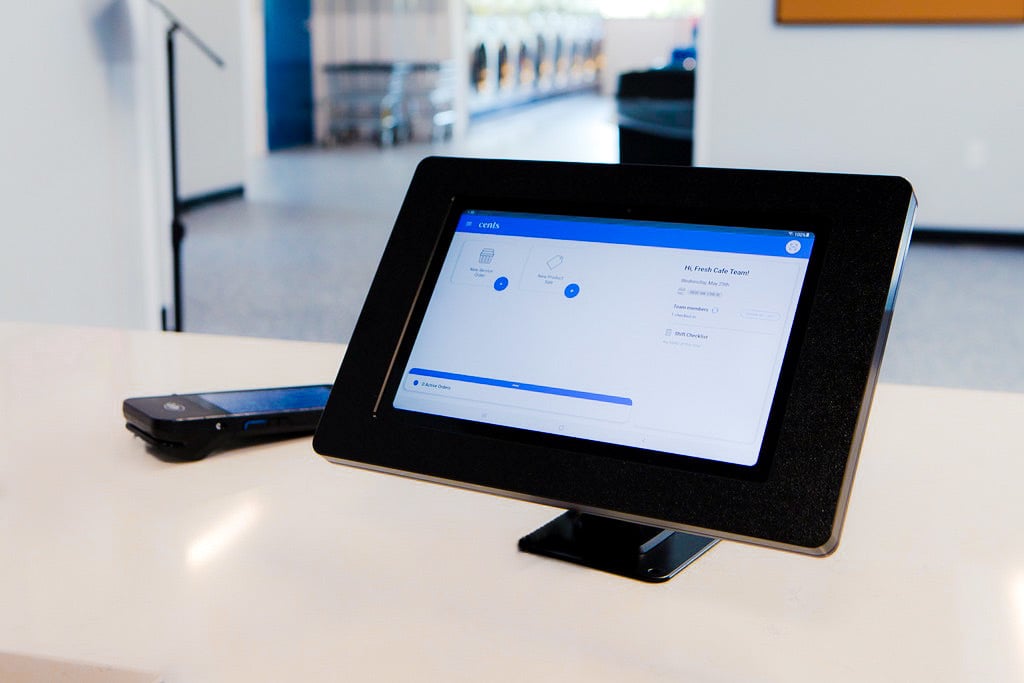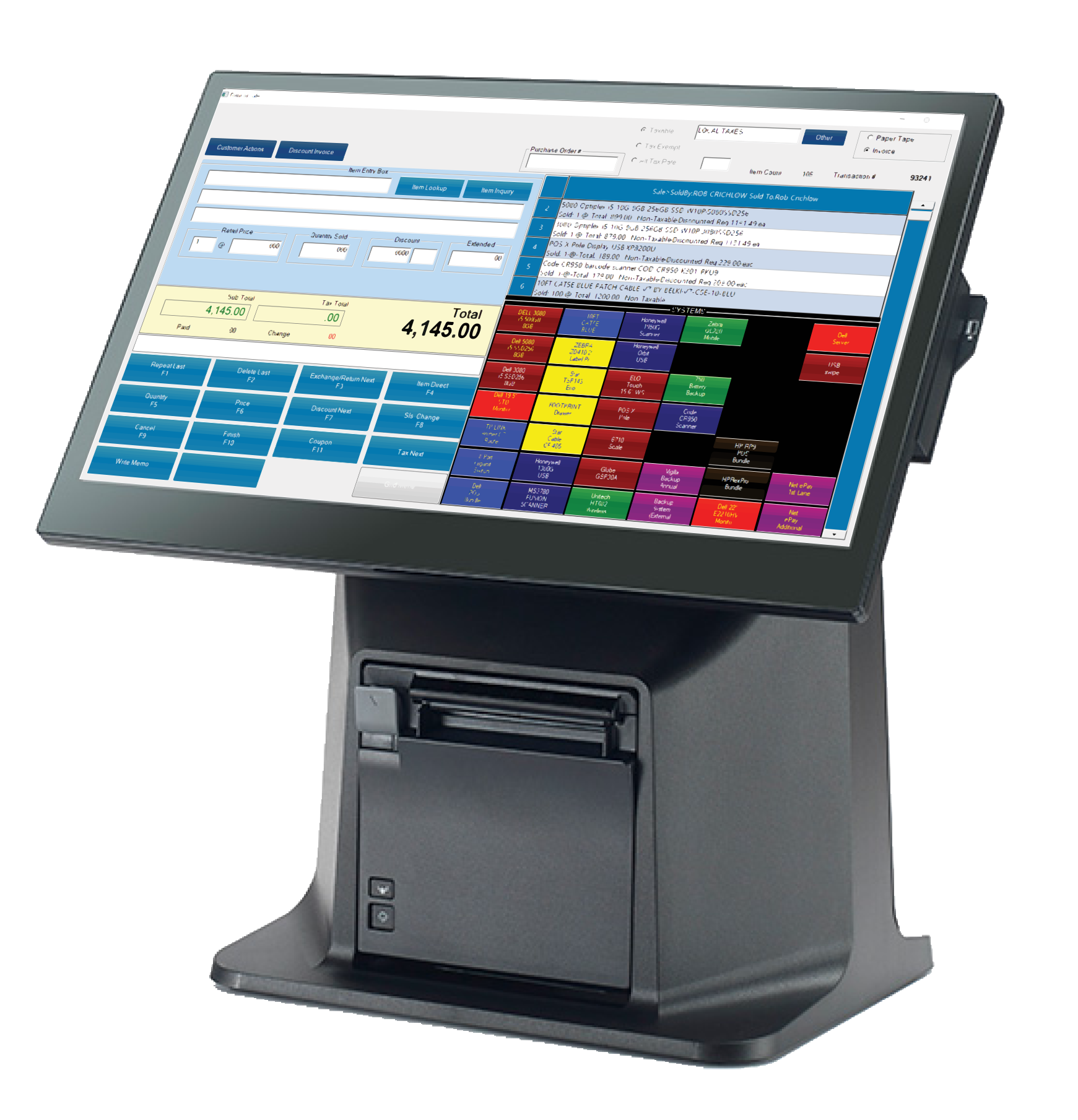Just How POS System Functions: A Comprehensive Guide for Entrpreneurs

Comprehending the Parts of a POS System

Exactly How Sales Transactions Are Processed
When a client chooses to buy, the sales transaction starts a collection of methodical actions within the POS system. First, the cashier inputs the items being acquired, which are scanned with a barcode viewers or by hand entered. This action gets item information, including rates and applicable taxes, from the system's database.Next, the client is presented with the complete quantity due. The POS system after that refines the repayment, whether via cash, bank card, or mobile repayment methods (Restaurant POS Software). For electronic payments, the POS securely connects with settlement processors to authorize and confirm the transaction.Once the repayment is validated, the system generates an invoice, which can be published or sent digitally. This invoice acts as receipt for the customer. The transaction information is tape-recorded in the system, ensuring accurate sales documents and monetary monitoring for the business.
Supply Monitoring and Tracking

Effective supply administration and monitoring are vital components of a POS system, as they assure that businesses maintain perfect supply levels and minimize disparities. A durable POS system enables real-time stock updates, showing returns and sales instantly. This enables entrepreneur to keep track of supply degrees precisely, guaranteeing that preferred items are conveniently available while preventing overstocking of less prominent products.Additionally, progressed POS systems use features such as automated stock informs and reorder tips, improving the purchase procedure. Barcoding and RFID modern technology enhance accuracy in tracking supply movement, minimizing human mistake. Comprehensive coverage devices provide insights right into supply turn over prices, aiding services make educated decisions concerning buying and item offerings. Inevitably, reliable stock monitoring through a POS system not only enhances functional efficiency but also improves customer contentment by guaranteeing item availability.
Assessing Consumer Information and Insights
Consumer information evaluation works as a powerful device for businesses utilizing a POS system (Restaurant POS Software). By accumulating and taking a look at purchase information, businesses can uncover valuable understandings about customer behavior and choices. This analysis allows them to recognize acquiring patterns, peak purchasing times, and popular items, therefore notifying stock decisions and marketing strategies.Additionally, services can sector their client base, permitting personalized advertising and marketing initiatives that deal with particular demographics or purchasing practices. Comprehending consumer commitment patterns also helps in developing targeted promos and rewards programs.The data amassed from a POS system can also disclose understandings right into customer responses, enabling services go to this web-site to make educated choices pertaining to product offerings and solution renovations. Ultimately, leveraging customer information efficiently can enhance the total purchasing experience, foster consumer contentment, and drive profits growth
Advantages of Applying a POS System

Often Asked Concerns
What Types of Companies Can Gain From a POS System?
Different companies benefit from a POS system, consisting of retailers, dining establishments, salons, and e-commerce systems. These systems enhance deals, inventory monitoring, and customer data, enhancing functional efficiency and boosting consumer experience across diverse sectors.
Just how much Does a POS System Commonly Expense?
The expense of a POS system usually ranges from a couple of hundred to a number of thousand bucks, depending upon features, equipment, and software application. Companies should think about recurring fees for assistance, transaction, and maintenance processing when budgeting.
Can I Incorporate a POS System With Existing Software Program?
Integrating a POS system with existing software is typically feasible. Numerous systems use APIs or integrated compatibility features, permitting businesses to streamline operations and improve functionality by connecting numerous software program applications effectively.
What Training Is Required for Team to Utilize a POS System?
Educating for personnel to use a POS system normally includes understanding software program functionalities, processing purchases, taking care of inventory, and dealing with customer communications. Practical presentations and hands-on practice sessions improve proficiency and confidence in using the system properly.
What Takes place if the Web Goes Down While Using a POS System?
Deals may be interrupted if the internet goes down during POS system use. Numerous systems supply offline capabilities, permitting fundamental operations to continue, but complete performance, consisting of real-time stock updates, will certainly be limited. A Point of Sale (POS) system is made up of a number of crucial components that function together to handle and facilitate transactions company procedures. Efficient supply management and monitoring are important elements of a POS system, as they assure that companies maintain perfect supply degrees and minimize webpage disparities. Client data analysis offers as an effective device for businesses utilizing a POS system. Understanding customer commitment patterns additionally helps in establishing targeted promotions and rewards programs.The data amassed from a POS system can additionally disclose insights right into client responses, making it possible for services to make enlightened choices relating to item offerings and service renovations. Carrying out a POS system supplies numerous benefits that can considerably boost business operations.